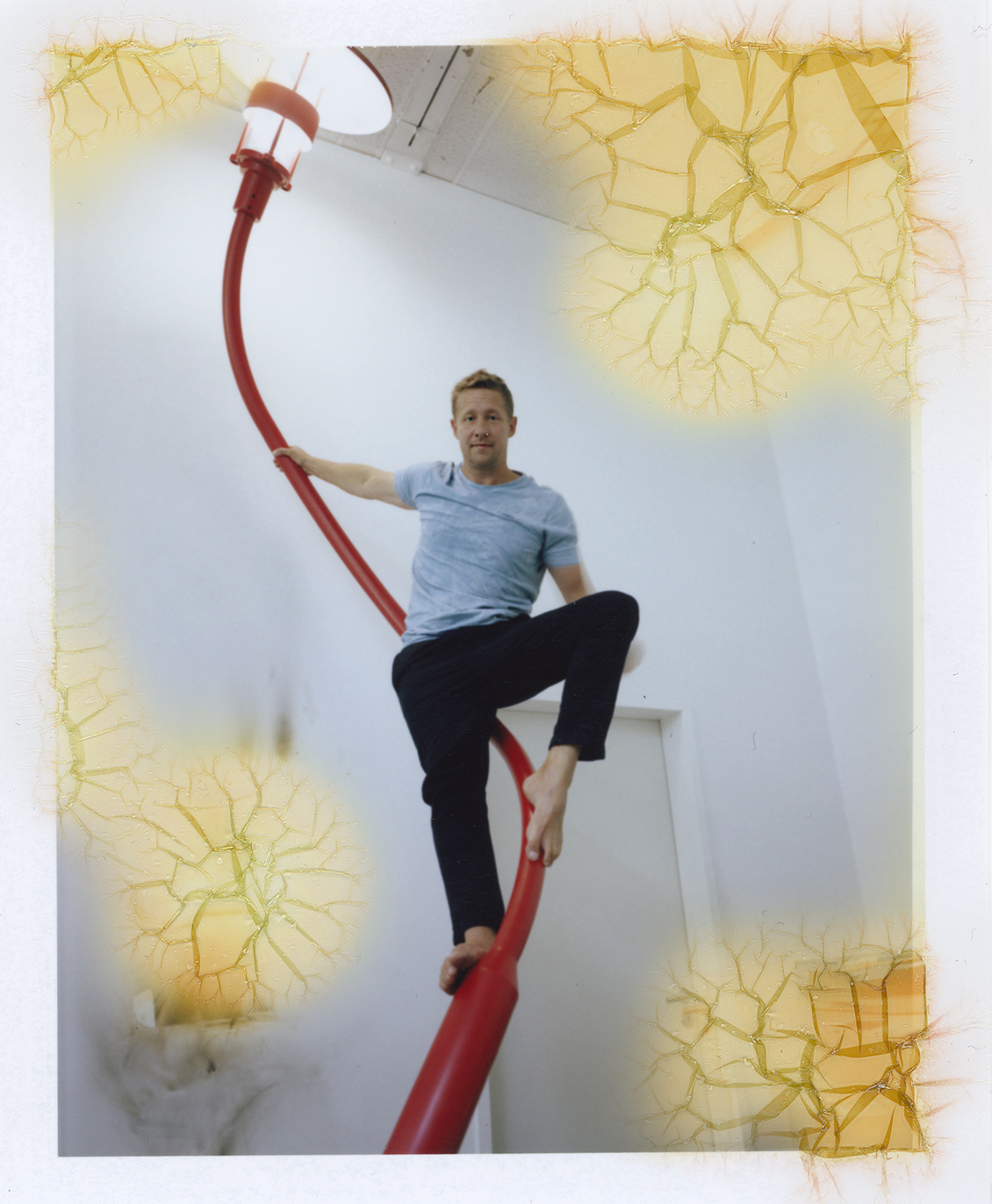Letting Go of The Ego
Published in Nuda:Ego
An ordinary park bench bent in a twirl, a huge curved mirror hanging from the ceiling, a playful, flirty fountain going on and off and a neon sign asking “Are you really happy” are all works by Jeppe Hein, the Berlin-based artist known for his work with light, mirrors and large public installation. His style clearly references both minimalism and conceptual art from the 50s and 60s with the difference that Jeppe has made even more importance of the relationship between work and audience. As a viewer you’re invited to be part of the works, either by being reflected in them, playing with them or taking part in creating them. Recently, Jeppe has even moved from making objects towards something more like relational aesthetics, where the work exists as interactions between people. “In the end, there were no artworks anymore, it was just experiences,” he says about his upcoming solo exhibition at the Modern Museum in Stockholm. This will be his second large solo presentation in Sweden and his work has previously been exhibited extensively all over the world. We meet in his studio for a talk about the ego and how to let it go.
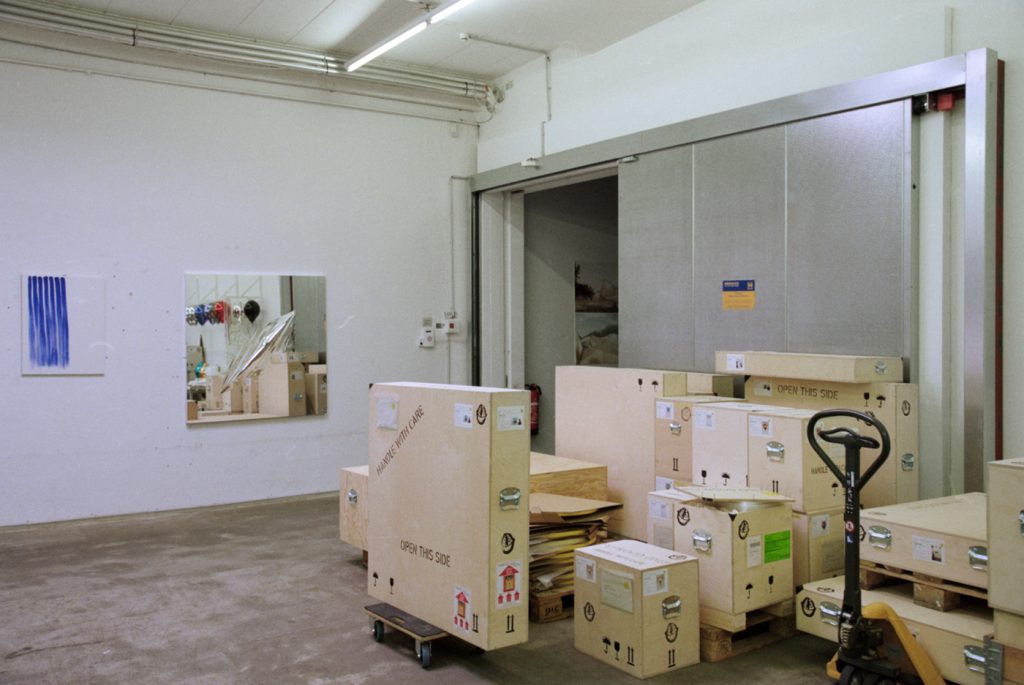
N: Your work revolves a lot around the I, what it is and how we should relate to ourselves. So, what is the ego to you?
J: The ego is very important to us as humans – it’s the thing that gives us energy and strength to do and achieve the things we want. It’s not a bad thing, as some may think, but when you start to meditate and look inside yourself to find out who you really are, then you always try to leave the ego, and not hold on to it. If you want to connect with things bigger than yourself, it’s very important to let go of your ego.
N: I know you got into mediation after your burnout in 2009, and since then I feel like your work has been either a way for you to process that experience or to try to help other people feel better and more at peace with themselves. What happened in 2009?
J: I had a total breakdown on a plane from Copenhagen to Berlin. Suddenly, I couldn’t feel my body anymore and I got more scared than I’d ever been before. It was not like being scared from a horror movie, what I felt was fear of death. In this moment, I completely lost control of my body. After this, I found out that I was very ill, both mentally and physically, a so-called burnout. It’s called a burnout because you’ve pushed your body beyond repair; I’d basically burned up my whole self and had to be rebuilt in a different way. It took me many years to come back and I had to go though a lot of therapy, at that time I couldn’t do anything. I realized that I felt fear because I was running away from things in my life. My work was a way for me to get the things I thought I needed – like finding love, acceptance, fame and people that wanted and needed me. Work became a way for me to escape. I traveled the world to attend all my exhibitions and never said no. All the things I was looking for were outside of myself, and then one day, I was just completely fucked up.
N: What did you do to find yourself again?
J: I tried a lot of different things and among others, I started psychoanalysis, yoga and doing breathing exercises. It was my mother that taught be to breath again – quite beautifully the woman that gave me my breath in the first place, could also give it back to me again at a point in my life where I’d lost it. At this time, I was constantly afraid and avoided social interaction. I spent a lot of time in nature. For a long period my mother helped me guiding my breath, counting to four on inhaling, holding for two and then exhaling on seven. This was also the time when I started doing watercolors. I drew lines on a piece of paper as a way to control my breath: inhale and exhale. I could feel that it brought my heartbeat down. I have a bunch of drawings from this time saying stuff like: “Sorry I’m brain-dead, I will be back.”
N: Did you come back as before, or did trauma change you?
J: When you’re facing a traumatic experience, whatever it is, it changes you. You have to let change change you. The only other option you have is to not let change change you, and cling on to how it was or who you were before, which is just an impossible task, as change already happened. I completely changed. Slowly. It was as if my wife got a new husband, she said. It took away some parts she liked about me, sides of me that were more ego – like the interest in having a big car and fancy clothes, going out drinking and partying. I’m not so much like that anymore.
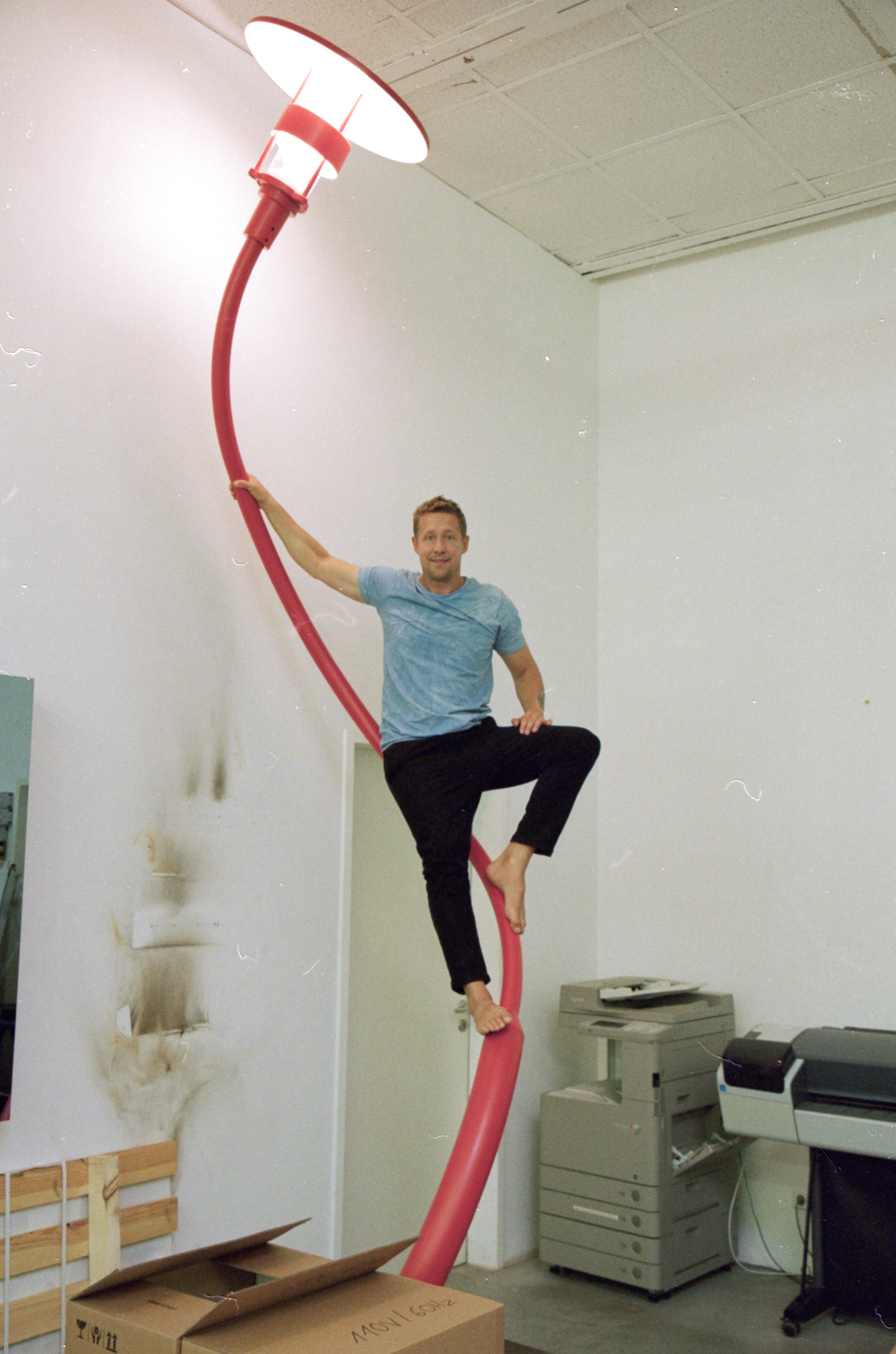
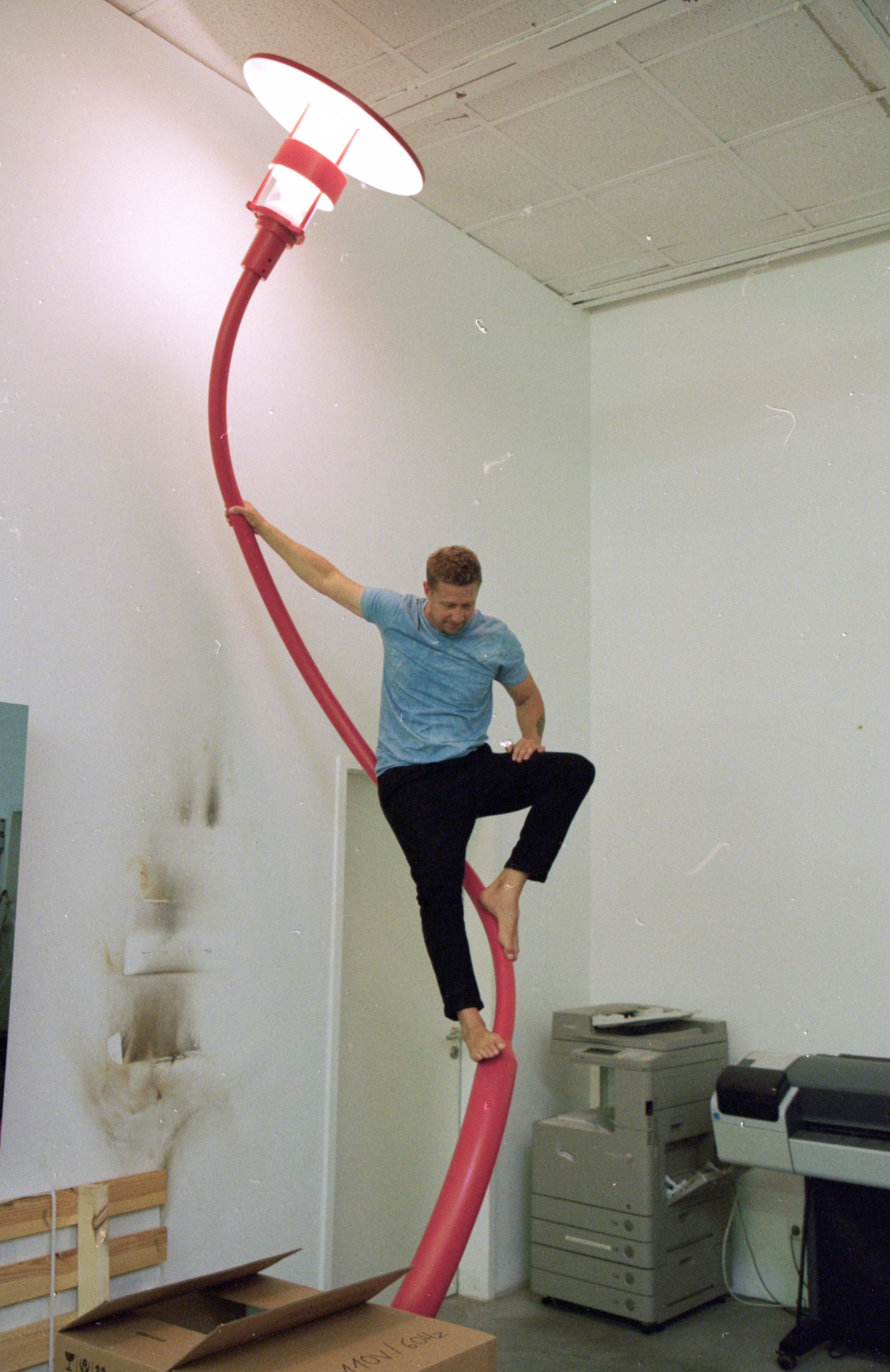
N: Right now, we are sitting in the kitchen of your studio. Just behind you is the studio chef, cooking up today’s lunch. You’ve set up your studio as a big team where everybody is part of making your work. Can you tell me a bit more about the ideas behind that?
J: My studio is built up as my family. Each person is part of a bigger whole. I like this idea of having a cook in the studio as well. Food is a fantastic way to gather people. The way the studio is built up allows me to be creative and free.
N: What you’re saying about everyone being part of a bigger whole kind of goes against this idea of the artist as a single genius, sitting alone in his studio all day and creating – as we imagine the grand masters. What you’re speaking about sounds more like collaboration. How do you reflect on the role of the artist today?
J: There are many answers to this, but I think when I started making art, I was never really into this idea of elevating the person over what they do. I don’t see myself as special.
N: Why? Fame usually goes together with some kind of personality cult, and you’ve made a name for yourself in the art world over the last decades.
J: I grew up on an organic farm in Denmark. It was a democratic, social society, teaching me that we are all equal. My parents were old hippies. I’ve never really been able to look at myself as a famous person, although I might be more known than others in some parts of the art world today.
It was my mother that taught be to breath again
N: Right here, right now is like a mantra that goes though your whole practice.
J: I have it here on my arm. [Showing his white tattoo spelling out I am right here, right now]
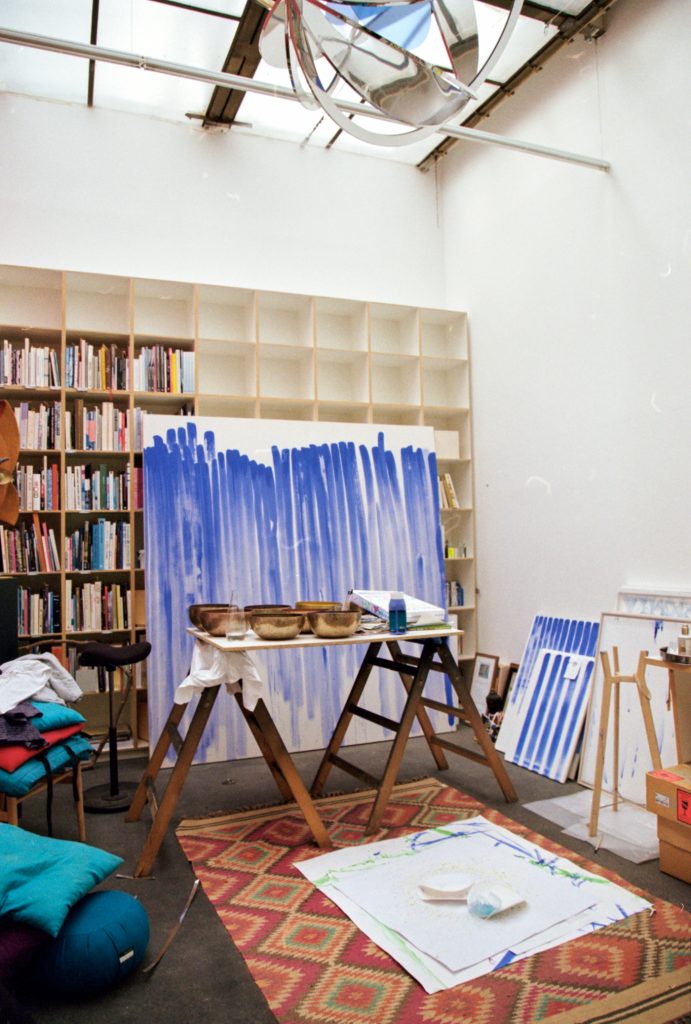
N: You said somewhere that to not be present is not good for your brain. “If you are not in your body, you are not present.” Do you feel that people lack presence today?
J: A lot. I think people spend too much time thinking about the future or the past. People are sad or upset about things that happened in the past, or nervous about the things that are about to happen in the future – and I think it is in those places fear and anxiety arise. I’m practicing to be nowhere else but here, but I think that is something I will have to practice my whole life.
N: Why is presence important?
J: Because the presence is now and in the now you can feel yourself.
N: Are all feelings good? Doesn’t that mean that sadness exists in the present as well?
J: You are normally sad because something has happened or something is going to happen. But of course, sadness sometimes exists in the present as well. It is only in the present you can really feel. Real feelings only exists in the present. If you allow yourself to be present and accept the feeling, whatever it is, it will make you feel better about it. It’s ok to be sad. It’s ok to be frustrated and it’s ok to be angry. All feelings are ok and we can try to accept them. And try to communicate them without hurting anyone, instead of just acting on them.
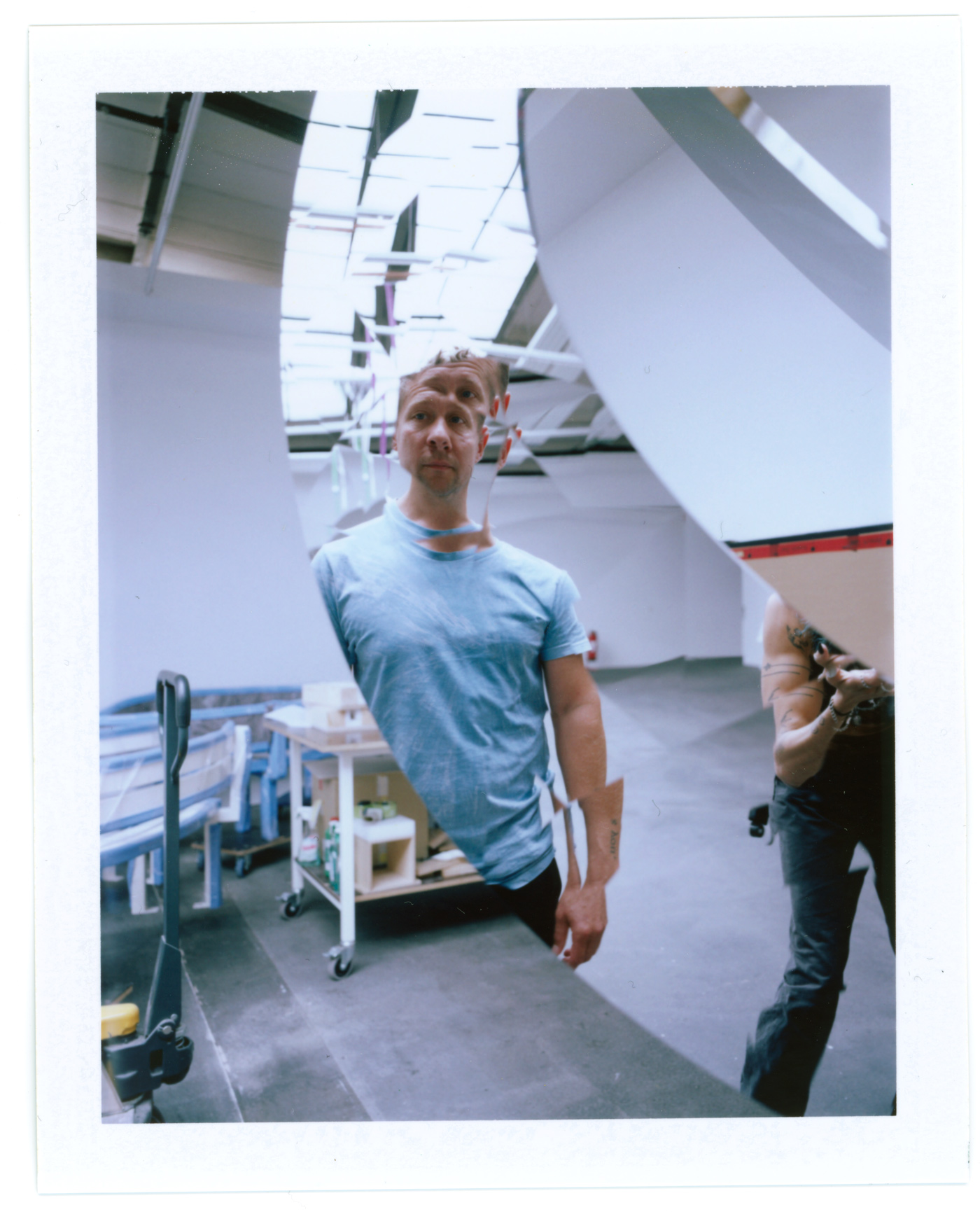
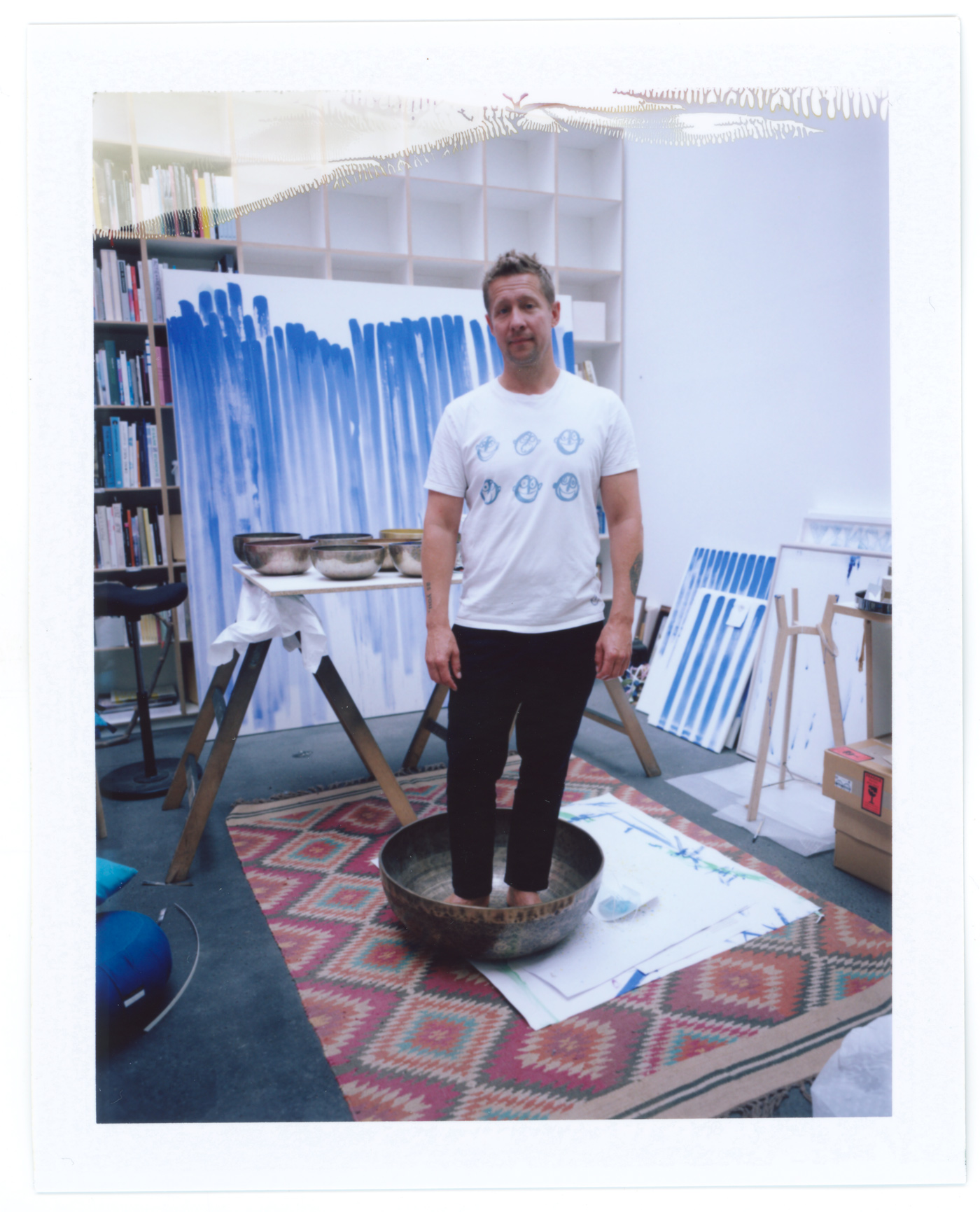
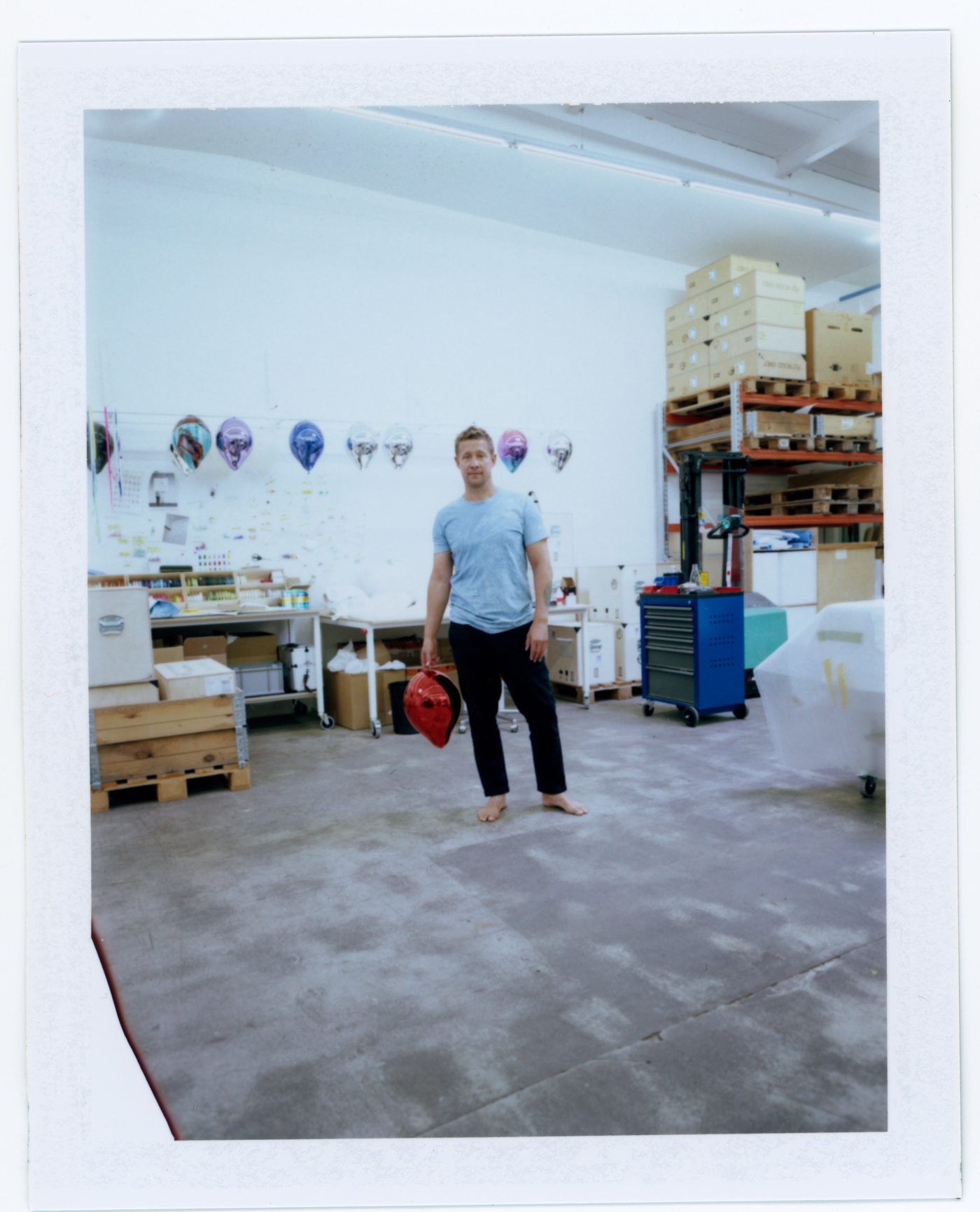
N: What is happiness to you?
J: It’s not just about being happy; it’s about being in balance. Like breathing, life goes up and down and if we were happy all the time, we wouldn’t even notice that we were. Being where I was, creating a new person, a new focus and discovering life again, was great inspiration for my artworks. Some insights were banal, but sometimes events in life also make you profoundly understand those banal things, like: You are amazing just the way you are. It’s ok. You are ok.
N: A lot of your work is a call upon people to chill out, be with themselves and listen. Can art inspire change in people?
J: I try to share my experiences of suffering, having pain or being burned out. It’s not because I want people to feel pity for me, it’s because I know that if you show people you are fragile, it allows other people to be fragile too. Art is a good way of inspiring people, because it’s not a spoken language. A lot of my work is interactive; it’s a tool for communication and dialogue between people. I think if you can make people play and step out of their comfort zones, they forget to protect themselves. This is the area where we start to live life, where we are present. It’s about making people step over their boundaries and open their hearts and do something they are not used to doing, or just smile at someone they are not used to smiling at.
N: When did you first start experimenting with interactive and participatory art?
J: I made one of my first interactive works, called Moving Wall no 1 for one of my first exhibitions in Frankfurt back in 1999. In the work you basically sit down on a bench and then a wall starts to move and drive off into the space. I could see that the interactivity made people so happy and made them communicate with each other even if they didn’t know each other. When people start to be a part of your work, you have to also be aware that things might happen that you didn’t plan for. With interactive work you have to be open to people behaving the way they want. I learned a lot about humans by observing how people interfere and interact with my work.
You have to let change change you
N: Throughout your practice, you repeatedly work with mirrors. It’s usually not just an ordinary mirror but one a bit distorted, broken or bent in a way that interferes with the viewer’s possibility to be fully reflected. In the work My Mirror the reflection is totally smudged from the way the mirror is made. In another work, Smoking Bench, the visitor is placed in front of a huge mirror but as you sit down, smoke comes out of the chair and you can see yourself disappear in the reflection. What is it about mirrors that fascinates you?
J: I think the first work I did with mirrors was a remake of Robert Smithson’s mirror cube, but I had broken the mirrors. I‘ve always been fascinated by the question of what the mirror reflects. Is it you? Is it a moment of you? Or is it just an image of you? The main reason why I’ve been using mirrors it to invite the surrounding into the piece. The mirror shows us the present: if the sky is blue, so is the mirror, but if it’s raining, it will also be raining in the mirror. In that sense, it’s a truth teller and a picture of the present.
N: It’s fascinating what you’re saying about what we actually see when we look at ourselves in the mirror. If I look too long into my own mirror image, I can really feel like I’m disassociating – questioning if it’s really myself I’m looking at. I feel like if you look long enough in the mirror, you understand that your soul and body are two different things.
J: Yes, and I think a lot of people don’t dare to really look at themselves in the mirror; it’s scary to find out what we have hidden in ourselves. We all have our wounds and things we don’t want to acknowledge about ourselves, it can be hard to see what we find in our own mirror image.
N: The mirror is the only tool for us to look ourselves in the eyes. Sometimes you don’t even want to look other people in the eye but confronting yourself like that can be an especially hard thing.
J: I have a teacher and we’ve been speaking a lot about why I didn’t look people in the eyes, as I do now. I said I was not looking people in the eyes because I felt like I was seeing too much. My teacher said that he thought I was trying to avoid seeing myself, because looking into another person’s eyes can be like looking into a mirror.
Is it you? Is it a moment of you? Or is it just an image of you?
| Photography | QU1N5E, Fede Rey and Rachel Israela |
| Words | Nora Arrhenius Hagdahl |

